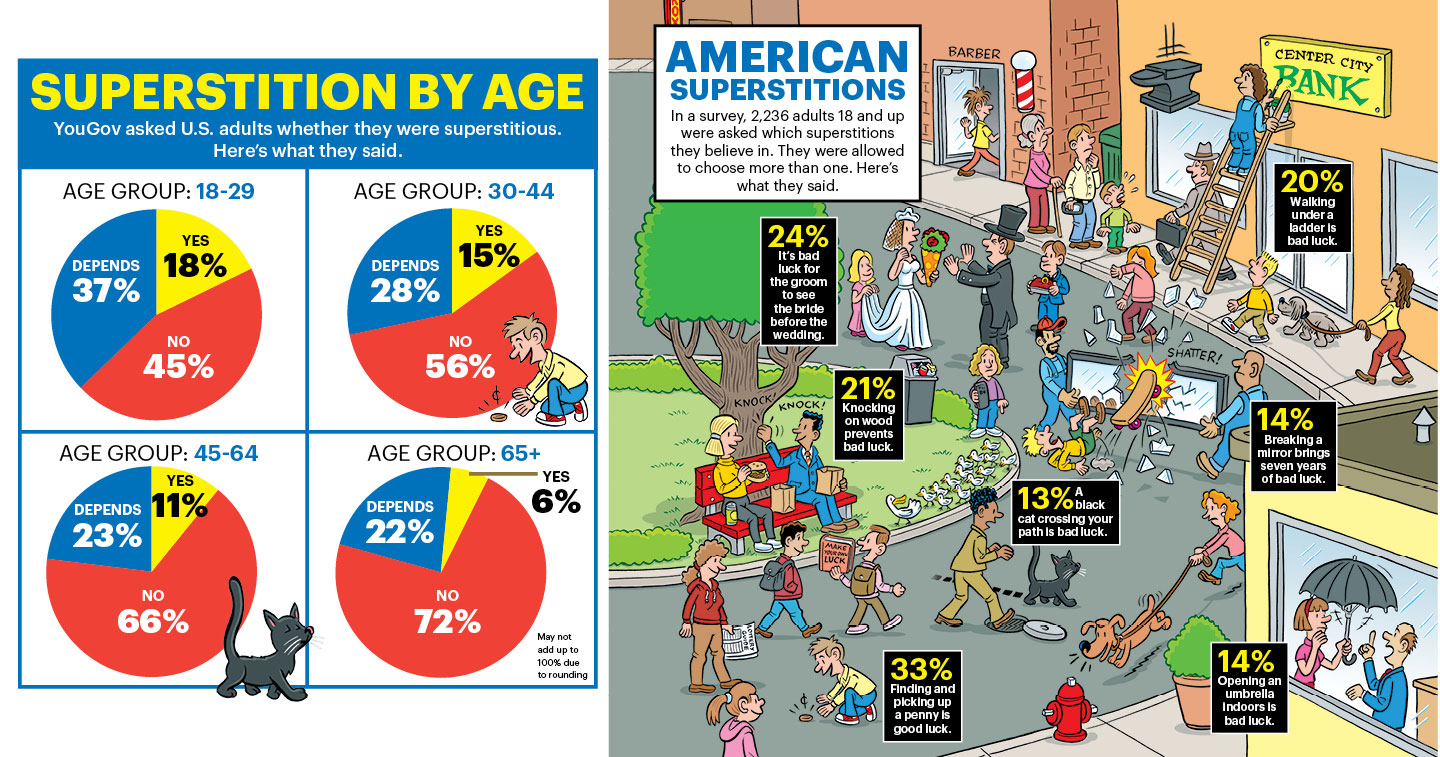Do you knock on wood to prevent a jinx? Do you avoid opening an umbrella indoors? Are you spooked by Friday the 13th? Well, get ready! March 13 is the first Friday the 13th of 2020. This supposedly unlucky date typically occurs once or twice a year. But it’s a relatively new superstition that evolved from two older ones.
“Many superstitions originate from ancient traditions that gave symbols—like animals, numbers, and shapes—evil or protective properties,” says Donald Saucier, a psychologist at Kansas State University. “By avoiding black cats or throwing salt over their shoulders, people were able to believe they could better control what happened to them.”
The number 13 was considered unlucky in Norse, Maya, and Christian traditions, explains Saucier. This superstition has persisted since then. Many modern hotels and tall buildings will not have a “13th” floor, instead numbering the floor above the 12th floor as the 14th floor.
Fridays have been considered unlucky since medieval times. The two superstitions morphed into Friday the 13th sometime in the 1800s. When Thomas Lawson published a stock market-based scare novel titled Friday, the Thirteenth, in 1907, the superstition was firmly planted in popular culture. Even former president Franklin D. Roosevelt was a believer—along with 13% of Americans!


